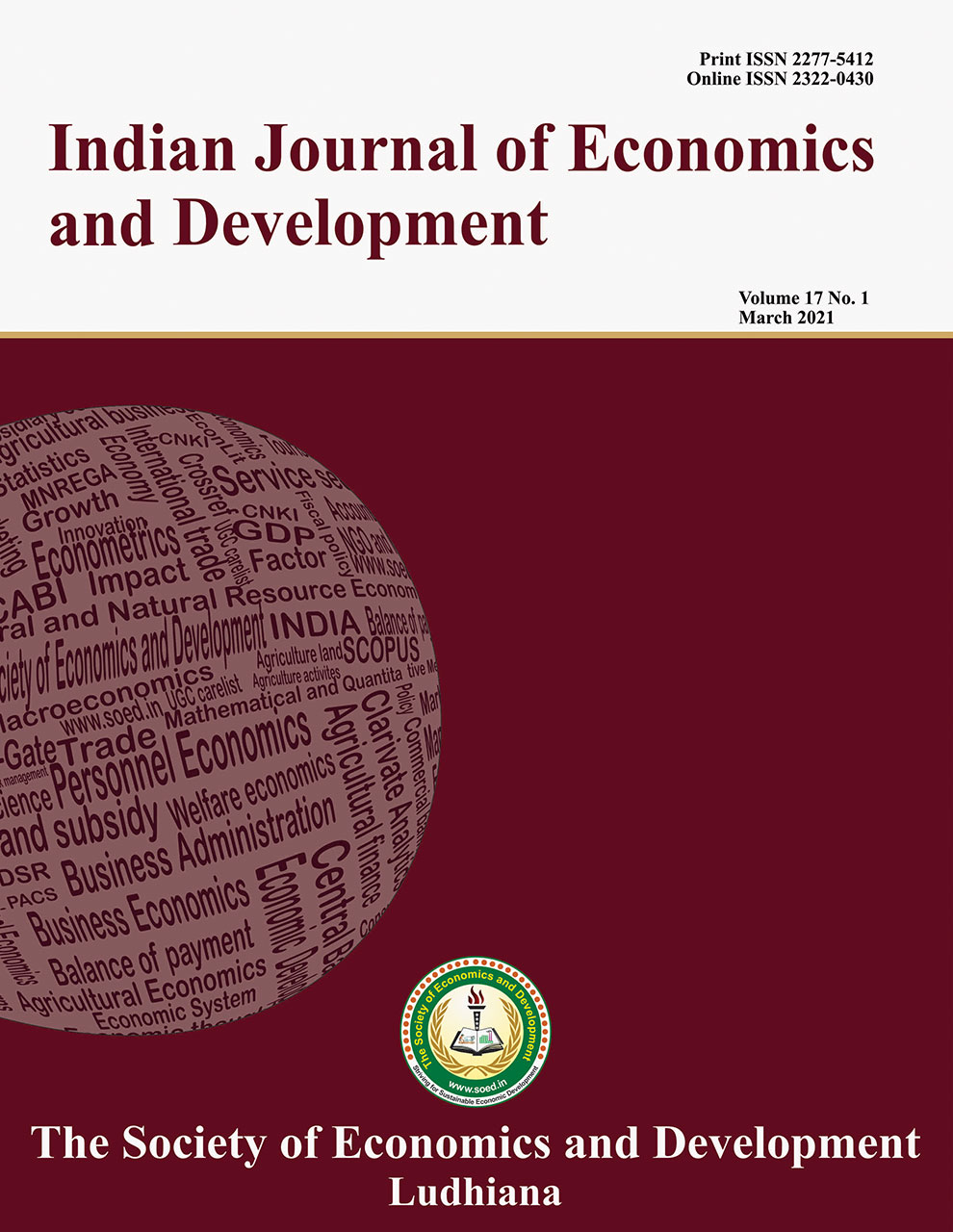Climate Change Effect on Productivity of Major Crops in Western Haryana

Price: ₹ 1000
Author: Dalip Kumar Bishnoi1, D.P. Malik2, Nirmal Kumar1, Raj Singh3, J.K. Bhatia4, and Deepak Singh5
Author Address: 1 Assistant Scientist, 2Professor-cum-Head, 3Professor,Department of Agricultural Economics CCS Haryana Agricultural University, Hisar-125004 (Haryana), 4Assistant Director, Directorate of Human Resource Management CCS Haryana Agricultural University, His
Keywords: Climate change, panel data approach, productivity, rainfall, temperature.
JEL Codes: C33, C8, O13, Q47, Q54.
Abstract
The study was conducted in Sirsa, Hisar and Rewari districts from Western Zone of the State during the year 2017-18. Data related to rainfall and temperatures were collected from department of agro-meteorology, CCSHAU, Hisar, whereas data related to area, production and productivity of major crops like paddy, cotton, pearl millet, wheat and mustard were recorded from various issues of statistical abstract of Haryana. The results of the study revealed that linear trend was observed in minimum and maximum temperature, whereas, in case of annual rainfall, non-linear trend was found in both Kharif as well as Rabi seasons in during the 2006-07 to 2015-16. The rise in maximum temperature was positive and significant effect on paddy crop yield whereas, it was significantly negative impact on pearl millet yield but in case of cotton, it was negative but non-significant effect on cotton yield. On the other side, rise in minimum temperature was positive but non-significant effect on productivity of paddy as well as pearl millet. Rainfall coefficient was observed significantly positive impact on pearl millet crop productivity whereas; it was negative but non-significant affect the productivity of paddy and cotton. Rainfall coefficient was observed significantly positive impact on pearl millet productivity whereas; it was negative but non-significant effect on the productivity of paddy and cotton in Hisar, Sirsa and Rewari districts of western zone of the state. The rise in maximum temperature was significantly negative effect on wheat crop yield whereas, it was negative but non-significant impact on mustard yield. On the other side, rise in minimum temperature was negative but non-significant effect on productivity of wheat as well as mustard. The rainfall coefficient was observed significantly positive impact on productivity of wheat and mustard in Western Zone of the state.
Description
Indian Journal of Economics and Development
Volume 16 No. SS, 2020, 512-515
DOI: https://doi.org/10.35716/ijed/NS20-044
Indexed in Clarivate Analytics (ESCI) of WoS
Dalip Kumar Bishnoi1, D.P. Malik2, Nirmal Kumar1, Raj Singh3, J.K. Bhatia4, and Deepak Singh5
1Assistant Scientist, 2Professor-cum-Head, 3Professor,Department of Agricultural Economics
CCS Haryana Agricultural University, Hisar-125004 (Haryana), 4Assistant Director, Directorate of Human Resource Management
CCS Haryana Agricultural University, Hisar-125004, and 5Scientist, IASRI, New Delhi-110012
Corresponding author’s email: dalipbishnoi@gmail.com



